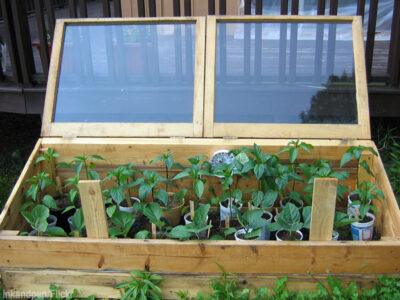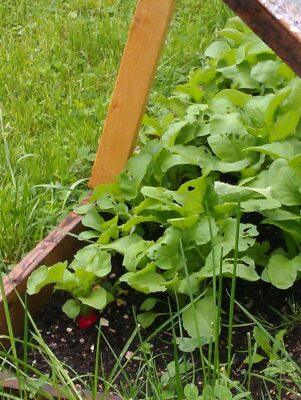There is a rhythm to the year-round garden. At no point are we without fresh food from the garden, though it changes quite a bit through the seasons. Here in Zone 5 and where potential frost days are six months out of the year, cold frames are more than a novel method; they are an absolute necessity. Consequently, managing your cold frames is as important as planning for the garden as a whole.
Most people who live where it snows for four or more months of the year believe they must give up gardening once the hard frosts set in, because it is too cold for plants to survive. While it is true that frosts will kill tender plants left exposed, and only cold-hardy crops can be maintained through extreme conditions, in reality it isn’t the cold that makes growing so difficult; it is the lack of sunlight. There are multiple plants that can overwinter in the frozen soil and grow in the spring, and a few that can be harvested frozen, and then thawed and eaten fresh.
However, in mid-winter plant growth will slow to a near standstill as photosynthesis slows. Your cold frames will protect your garden from the most severe conditions, and can maintain temperatures warmer than the surrounding area, but there is little that can be done about the sunlight. Therefore, don’t expect miracles.
Cold-Frame Gardening: Get The Best Deals On Non-GMO Heirloom Seeds Right Here!
Most especially, don’t expect that your cold frame is equivalent to a greenhouse. Because you will likely not be installing heaters, irrigators and artificial lighting in your cold frames, you cannot expect to be growing plants that are not winter crops. You will not get peppers or tomatoes harvested in winter from a cold frame unless you are in a more tropical growing zone (in which case you probably wouldn’t need a cold frame.) Rest assured, however, that forcing crops out of season rarely yields satisfying results; the more flavorful and nutritious choice is always to grow what would more naturally grow in your climate at the particular time of year you are growing.
In the northern part of the country, the best crops for cold frames will be greens such as lettuce, spinach, kale, and cress. Chard, bok choy, carrots, beets, and cabbage can also be harvested late into fall and through winter in some areas. As you harvest through the season, space will open up in the cold frame. Consider continuous sowing of sprouts and herbs if the soil remains soft. Mache and scallions can both be harvested frozen.
Manage Daily Conditions
Even in the north, there are warmer days and colder days in the winter. An essential part of successful winter gardening is attention to daily conditions – no different than in summer. On mild, sunny winter days early and later in the season, it will be necessary to vent your cold frames in order to avoid burning the delicate greens within. Install a thermometer on the outside of your cold frames and vent when it shows an outdoor temperature of 40 degrees Fahrenheit (5 degrees Celsius), especially if it is sunny.
Additionally, be prepared for winter storms, and cover your cold frames with insulation or a snow shield in preparation for harsh or icy conditions. After the storm has ended, clear snow and ice from the tops of the frames and the surrounding space. Even better, construct a snow fence on the least-sheltered side of your frames to protect them all winter long.
This New All-Natural Fertilizer Doubles Garden Production!
Lastly, monitor soil conditions within the frames for moisture content. Too much moisture within cold frames can promote fungal growth, killing off your plants.
Other Uses for the Cold Frame
Once spring is approaching and the cold frame crops are nearing the end of their season, it will be time to repurpose your cold frames. Consider dedicating space to promote successful spring growth through the following:
- starting seeds outdoors, earlier than you would be able to in the garden proper, but more hardy than those started indoors.
- protect and harden seedlings started indoors.
- starting bulbs such as garlic and onions, left to overwinter in the cold frames.
Whatever you choose to eat from your winter garden, there is little to match the joy of a fresh harvest on a cold day, and there is little doubt that planning a year-long garden will enhance your family’s well-being and improve your harvests.
What advice about cold frames would you add? Share it in the section below:
Every Year Gardeners Make This Avoidable Mistake — But You Don’t Have To. Read More Here.
 Off The Grid News Better Ideas For Off The Grid Living
Off The Grid News Better Ideas For Off The Grid Living






